
by: SEO Strategist
Ashot Nanayan
Ashot Nanayan is the CEO and Founder of DWI and a seasoned SEO strategist. With a proven track record of...
All Articles by Ashot Nanayan
Updated August 7, 2025
7 min read
Link-building is one of those topics that tends to divide SEO professionals. Some find it tedious and repetitive, while others approach it with enthusiasm, though, a lot of that enthusiasm comes from not fully understanding how to qualify a good link (we’ve all been there). For me, though, link-building has always been one of the most exciting parts of SEO. I really enjoy the process of vetting prospects and finding relevant opportunities.
After more than seven years in the SEO field, filled with plenty of lessons learned along the way, I’ve come to appreciate just how much link-building influences the success of any SEO strategy.
That’s why I’ve decided to share some key statistics and insights about link-building: numbers that will give you a clearer picture of where things stand today and where they’re going. Whether you’re looking to enhance your strategy or just get a better handle on what works (and what doesn’t), these stats will help you make smarter decisions.
The top five off-page SEO factors, along with their approximate impact percentages, are as follows:
However, 93% of all SEO professionals believe backlinks have the most significant influence on search engine rank compared to any other off-page signal.
67% of marketing teams allocate at least one-third of their SEO budget directly to link-building initiatives.
82% of high-ranking web pages have at least 100 incoming links from unique referring domains.
30% of search engines’ ranking algorithms are still thought to be influenced by domain-level link authority.
77% of agencies say securing editorial backlinks from reputable news outlets remains the hardest part of link-building.
48% of B2B brands struggle to get links due to niche topics being less appealing to a wider audience.
62% of eCommerce sites see a direct correlation between consistent link growth and higher conversions.
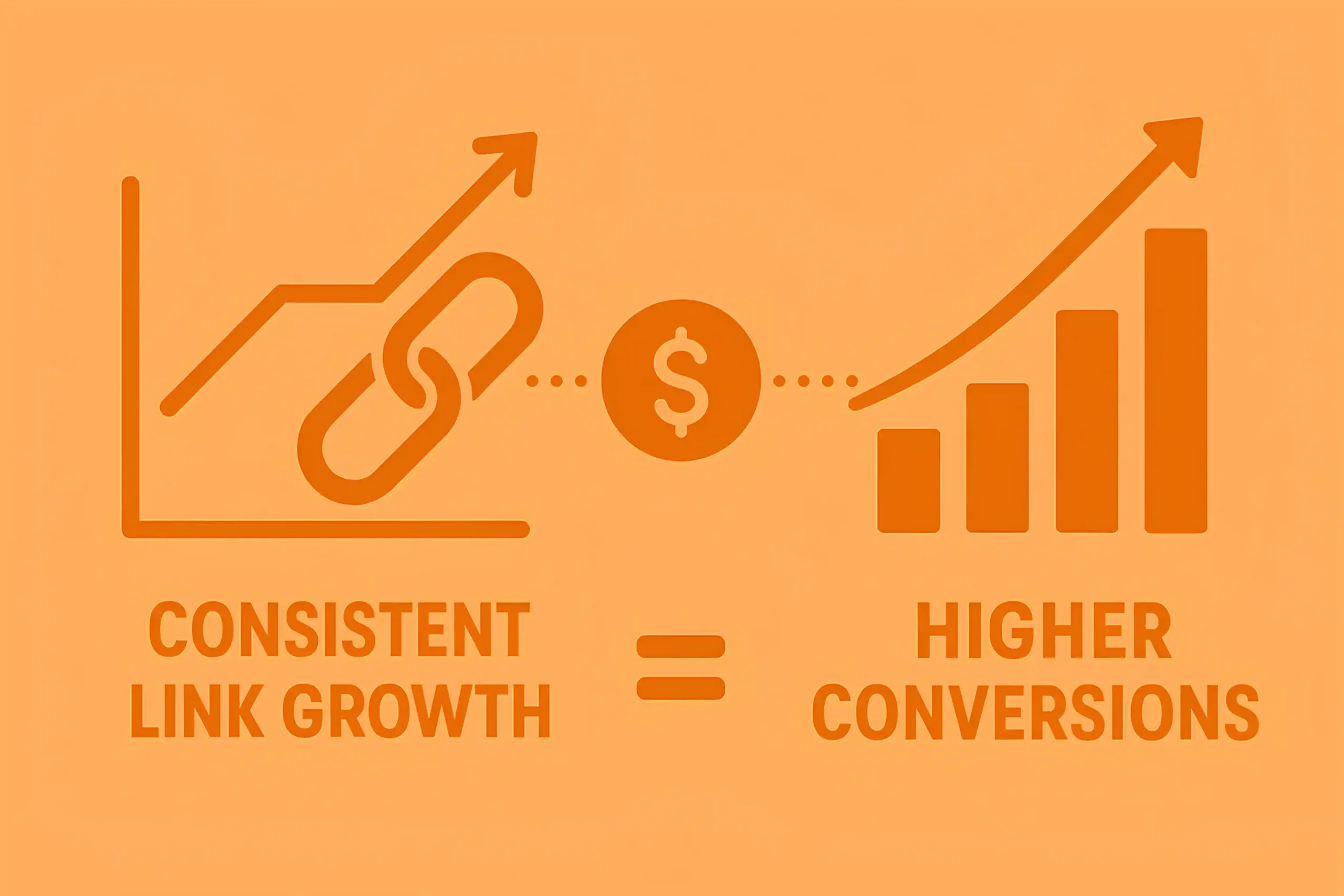
44% of SEOs consider link-building the single most time-consuming aspect of their job.
80% of link-building campaigns fail to reach their full potential because of insufficient outreach personalization.
Top link-building techniques and the average percentage of campaigns seeing significant results from each technique.
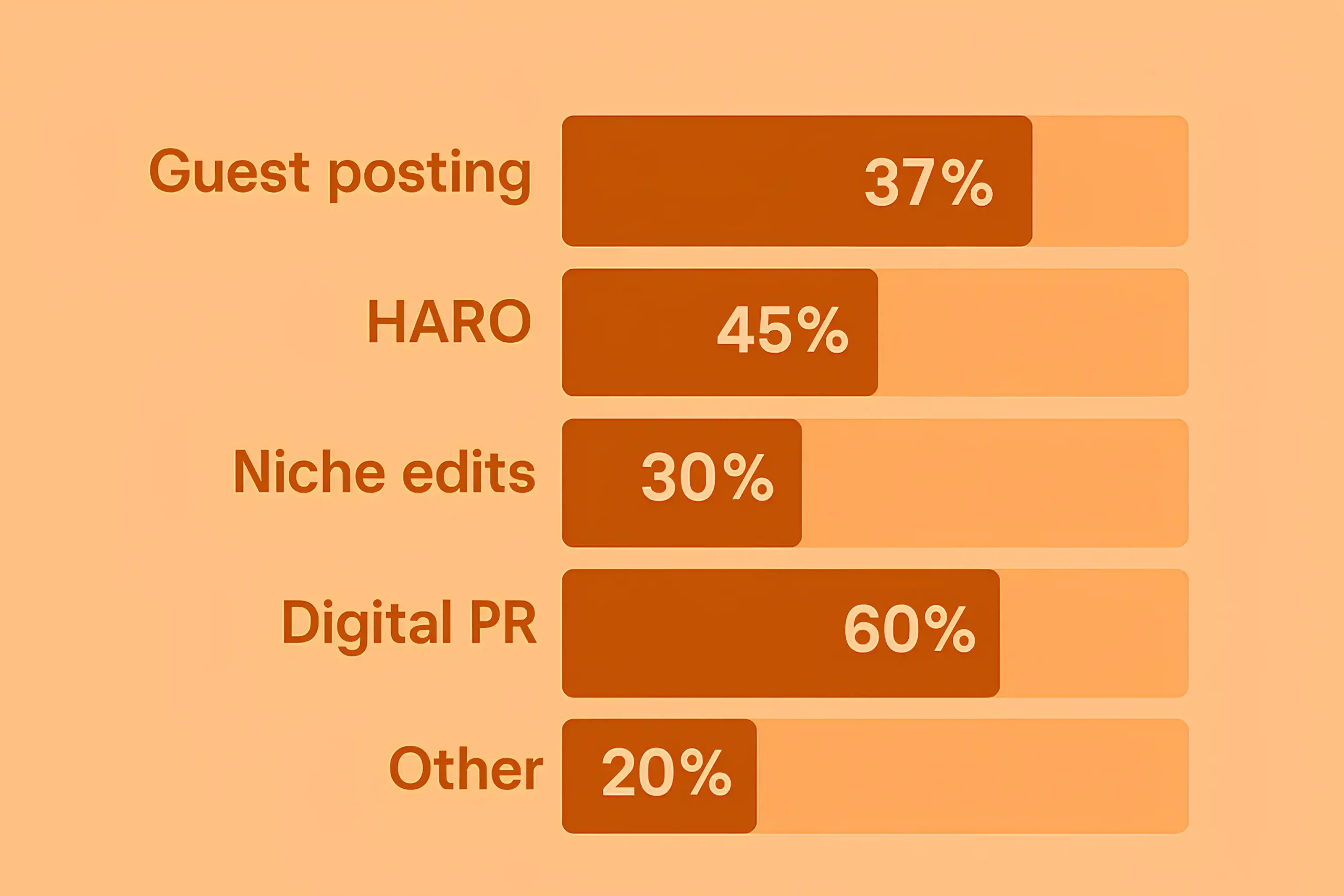
71% of marketers say guest posting on industry blogs is their top method of acquiring quality backlinks.
52% of blogs receiving guest post pitches accept only 1 in 10 proposals due to high editorial standards.
46% of well-known industry blogs report a 20% increase in organic traffic within three months of running consistent guest contributions.
85% of editors reject guest posts immediately if they detect AI-generated or overly templated content.
23% of guest post publishers also promote accepted articles through their email newsletters, resulting in 15% extra referral traffic for the author’s site.
90% of “free guest post” directories or blogs accepting free submissions are either spammy, link farms, or flooded with irrelevant content.
67% of guest posting outreach emails fail because they don’t include a unique value proposition or strong hook in the subject line.
29% of guest post authors eventually form ongoing content partnerships, leading to multiple links from the same domain over time.
92% of marketers rate “relevance to the target blog’s audience” as the number one factor in successful guest posting.
16% of SEO experts say broken link-building provides better ROI compared to traditional outreach methods.
73% of broken link-building practitioners leverage link-building automation to find 404 errors on top-tier domains.
22% of editorial teams are unaware of broken links on their site, making them more open to helpful link replacement suggestions.
63% of broken link-building opportunities are found on resource pages that have not been updated in over a year.
15% of link prospects will proactively update old resources if a relevant replacement link is offered without any direct incentive.
31% of large enterprise companies have unmaintained pages leading to significant 404 link opportunities for SEOs.
48% of broken link-building leads to multiple backlinks from the same domain if the site has numerous broken pages.
85% of SEO veterans recommend combining broken link-building with fresh, updated content to boost acceptance rates.
61% of marketers confirm that infographics receive twice as many backlinks as text-based content on average.
29% of websites say they’re more inclined to link to a data-rich infographic than a lengthy research article.
77% of marketing teams that invest in custom-designed visuals see a notable improvement in backlink velocity.
54% of infographic-led link-building strategies result in a 10% higher click-through rate to landing pages.
48% of infographic outreach emails that include a personalized note on how the graphic ties into the recipient’s content earn a backlink.
62% of SEO consultants advise to repurpose a single infographic into slide decks, videos, and social carousels for additional link-building opportunities.
89% of content creators believe that combining strong storytelling with eye-catching visuals is essential to unlocking maximum link potential.
47% of long-form “Skyscraper” articles rank on the first page of Google within six months of publication.
71% of SEOs say skyscraper content generates 35% more backlinks than ordinary blog posts of similar length.
26% of marketers rewrite their skyscraper content annually to maintain evergreen value and keep link prospects fresh.
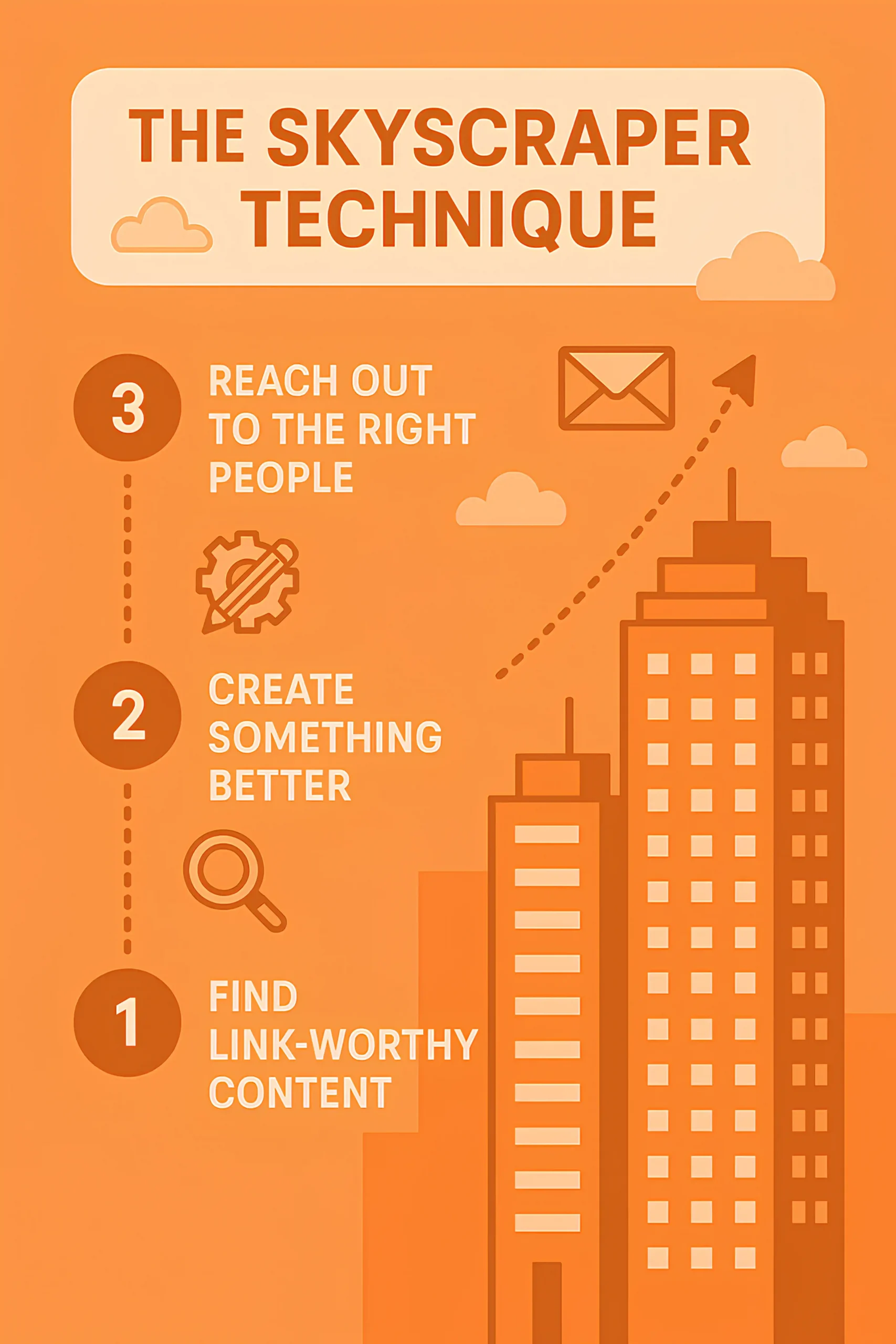
40% of link-builders say the biggest challenge with skyscraper content is finding new data points to outdo competing pieces.
88% of B2B companies rely on long-form guides (2,000+ words) to consistently attract high-authority backlinks.
53% of skyscraper articles see a boost in backlink growth after being updated or expanded with current statistics.
69% of top-ranking pillar content uses structured formatting (tables of contents, headings, bullet points) to appear more authoritative.
16% of SEO specialists confirm that they use paid ads or social pushes to jumpstart backlink traction for skyscraper pieces.
35% of bloggers who attempt the skyscraper technique don’t conduct a proper competitive content gap analysis.
84% of link-earning skyscraper articles reference at least 5 external authoritative sources for credibility and outreach material.
64% of universities and college websites actively maintain resource pages that are prime link-building targets.
38% of digital marketers say that being featured on a high-authority resource page can boost referral traffic by over 20%.
41% of resource page submissions are accepted if the suggested site or article directly complements existing listings.
22% of older directories (launched 10+ years ago) still hold solid SEO value due to strong domain authority.
33% of resource page link opportunities are overlooked due to inadequate research into niche directories.
42% of directories use a strict vetting process and only high-quality websites with unique value cuts.
69% of SEOs believe that resource pages should be approached like a partnership, offering fresh info or updated data to remain listed.
18% of websites conduct an annual audit to remove outdated or irrelevant resource links, creating new link-building openings.
87% of marketers acknowledge that the biggest advantage of resource page links is the immediate trust boost from the association.
55% of link-building experts find niche edits to be 30% faster than creating new guest posts for high-authority link wins.
48% of site owners are open to adding relevant contextual links to older articles if pitched with a compelling value proposition.
89% of websites charge a “placement fee” for inserting links into high-traffic content, indicating the rise of paid niche edits.
72% of niche edits successfully stick for at least 12 months when the inserted link truly enhances the reader experience.
23% of pages with newly inserted links rank for additional long-tail keywords within 45 days.
34% of SEO agencies use content refresh strategies to identify prime paragraphs for link insertions.
44% of marketing professionals view niche edits as riskier than organic editorial links, especially if done at scale.
58% of bloggers are receptive to link insertions if they come packaged with minor content improvements (like updated facts or references).
15% of editorial guidelines strictly prohibit adding external links to published articles, limiting niche edit opportunities.
63% of link-building consultants believe that high-level personalization and thorough site research are crucial for successful niche edits.
66% of SEO professionals report that link-building consumes between 15% to 25% of their total marketing budgets.
29% of enterprise-level companies (5,000+ employees) invest over $10,000 per month solely in link-building.
42% of startups (less than 3 years old) dedicate at least $1,000 monthly to secure quality links during growth phases.
59% of eCommerce businesses mention influencer collaborations as their most expensive link-building technique, averaging $450 per link.
37% of B2B firms exceed their planned link-building budget to compete in high-authority niche markets.
71% of agencies consider “content creation and editorial fees” as the largest cost factor in link-building campaigns.
23% of healthcare-related websites pay a premium of 30-50% more than other industries due to stringent editorial guidelines.
54% of finance-related businesses allocate their budget to top-tier publications, with some paying up to $1,200 per link insertion.
31% of small local businesses keep link-building expenses under $500 monthly, relying mostly on local directories and partnerships.
87% of marketers believe that “hyper-relevant backlinks” justify higher costs because of better long-term SEO ROI.
43% of grey niche sites (e.g., adult, gambling, CBD) reject outreach from generalist blogs due to brand protection concerns.
61% of agencies charge a 35% premium to build links for grey niche clients, referring to higher risk and fewer willing publishers.
35% of grey niche brands rely on affiliate-focused websites as their primary source of inbound links.
78% of publishers who do accept grey niche guest posts demand editorial fees averaging $250-$400 per article.
22% of outreach emails to mainstream media get flagged or ignored if the pitch involves grey niche references.
49% of grey niche link-building specialists emphasize using private blog networks (PBNs) to bypass strict editorial guidelines.
28% of grey niche websites rely on heavy anchor text dilution (e.g., brand and generic anchors) to avoid over-optimization penalties.
66% of high-traffic sites in controversial sectors (gambling, dating, etc.) see a 35% bounce-back in link acceptance if they highlight responsible or educational content.
19% of marketers create separate “clean” brand sites to cross-link from safer, broader-reach domains.
53% of SEO veterans warn that reliance on PBNs (Private Blog Networks) can lead to “link volatility” during major Google updates.
61% of marketers who have used PBNs report short-term ranking boosts but a 52% higher risk of sudden drops.
27% of purchased “link farm” links remain active for less than 6 months, often due to domain shutdowns or Google penalties.
44% of link-building specialists confirm that PBN usage demands monthly maintenance fees of $10-$50 per domain (hosting, domain renewals, content refresh).
18% of new website owners unknowingly acquire domain names that were once part of defunct link farms.
73% of clients who initially wanted “quick wins” via PBNs ultimately pivoted to white-hat link-building strategies after seeing increased penalty risks.
32% of PBN managers rotate IP addresses every quarter to avoid detection by search engine crawlers.
14% of link-building agencies admit they still offer PBN links under “covert” or “private” solutions to select clients.
69% of PBN-based campaigns incorporate spun content, resulting in 40% lower reader engagement.
91% of industry experts recommend focusing on real editorial links rather than PBNs, stressing long-term stability over short-term gains.
39% of SEO professionals admit to having tried link exchanges at least once to boost domain authority.
23% of marketers consider link exchanges a “last resort” tactic when other link-building methods stall.
64% of business owners receive at least one “Let’s swap links” outreach email per week, indicating high saturation.
42% of link exchanges remain live for less than 6 months, either removed manually or lost due to site changes, redesigns, or deindexing.
33% of link exchanges survive between 6 months to 1 year, especially when both parties maintain regular communication or have mutual value.
Only 25% of link exchanges last beyond 1 year, and these are usually part of long-term partnerships or happen between editorial teams that forget or choose not to remove links.
18% of link-building agencies report that they decline 90% of link exchange offers due to poor site quality.
45% of reciprocal links are dropped within 6 months because one party removes the backlink after gaining their share.
59% of link exchange participants use the nofollow or sponsored attributes to avoid potential penalties.
31% of companies find link exchanges more effective when paired with honest collaboration, like co-branded content.
41% of eCommerce websites with limited content rely on link exchanges to build initial domain trust.
12% of major SEO penalties reference “excessive link exchanges” as a key factor in Google’s documentation.
27% of SEOs believe that a carefully vetted link exchange with clear editorial relevance can still be a net positive for brand visibility.
89% of SEO agencies admit they have experimented with paid link placements at least once.
21% of brand managers acknowledge purchasing links in competitive niches to accelerate ranking.
39% of link buyers perceive a 20-40% short-term lift in rankings within 30 days of acquiring paid links.
14% of purchased links come from private blog networks (PBNs), a practice that experts deem risky.
73% of paid link sellers do not publicly disclose that they sell links, preferring discreet negotiations.
36% of SEOs who buy links perform monthly link audits to mitigate potential penalties.
27% of websites that aggressively purchase links see some form of penalty (algorithmic or manual) within one year.
62% of link buyers abandon paid tactics if they see a ranking drop shortly after the initial boost.
18% of eCommerce site owners say they only buy links for product category pages, believing it delivers faster ROI.
52% of paid link placements cost between $200-$500 per backlink, depending on domain authority and niche relevance.
62% of all external links across the average business website are dofollow, while 38% are nofollow.
46% of marketers believe that maintaining a natural balance of dofollow and nofollow links helps avoid search engine penalties.
67% of large publishers automatically add nofollow to user-generated content or external links to reduce potential link spam.
21% of enterprise-level sites unintentionally set internal links as nofollow, losing valuable link equity in the process.
73% of SEO professionals actively track dofollow and nofollow links to get a complete picture of their backlink profile.
58% of eCommerce brands see a 10% increase in referral traffic, even from nofollow links, due to high visibility on major platforms.
44% of websites using purely dofollow links in their backlink strategy encounter a higher risk of Google manual reviews.
33% of link disavow requests include nofollow links that were mistakenly identified as toxic or harmful.
82% of SEO agencies educate clients on the strategic importance of a balanced ratio of dofollow to nofollow backlinks.
19% of SEO audits reveal that site owners misunderstand the role of nofollow, often dismissing it as having zero value for SEO or branding.
68% of digital PR campaigns result in at least one high-authority backlink (DA 70+), often from news outlets.
56% of journalists say they’re most likely to link back if the pitch provides fresh, exclusive data or statistics.
71% of PR link-building professionals focus on securing brand mentions in mainstream publications, even if a direct hyperlink isn’t guaranteed.
24% of PR-driven link-building efforts are tied to product launches or significant company announcements.
81% of in-house marketing teams track coverage in tier-1 publications (Forbes, Hubspot, etc.) as a key metric for PR success.
35% of PR campaigns attribute success to unique story angles: timeliness, cultural relevance, or compelling data.
62% of press releases with “newsworthy hooks” generate at least two high-quality editorial backlinks.
39% of businesses initiate monthly PR pushes to maintain consistent brand visibility (and backlink acquisition).
77% of large-scale media pickups mention the brand in the headline or subheadline, further boosting SEO signals.
45% of PR professionals combine influencer partnerships with media outreach to multiply the likelihood of multiple backlinks.
32% of podcasters include “show notes” with outbound links, making them an untapped link-building treasure.
78% of interview-based link placements remain active indefinitely because episodes typically have evergreen value.
Top industries with the highest percentage of links generated by podcasts:
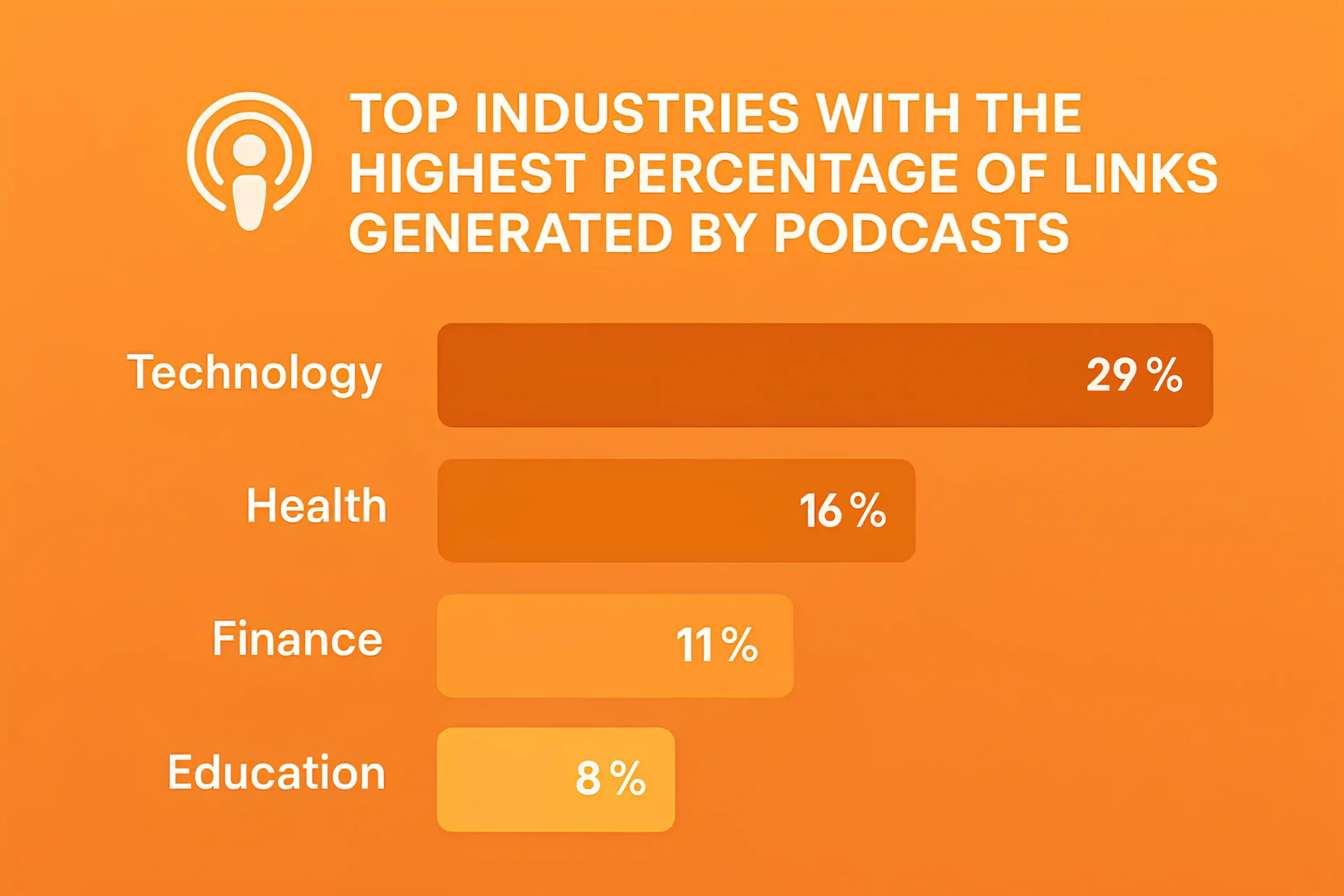
29% of podcasts also upload transcripts online, providing an extra chance to insert relevant backlinks naturally.
18% of businesses see direct SEO benefits by hosting a podcast and linking back to their main site in every episode description.
54% of marketing pros cross-promote podcast appearances on YouTube or LinkedIn, generating second-tier link-building opportunities.
42% of well-produced podcast interviews rank in Google’s top 20 SERPs for brand name searches.
66% of interviewees embed the episode on their own site and link back to the host’s show notes.
13% of podcasts offer paid sponsorship packages that include a permanent link in the episode resources.
57% of SEO strategists recommend pitching podcast appearances to help diversify and future-proof link profiles.
78% of local businesses attribute a noticeable SERP boost to consistent NAP (Name, Address, Phone) citations across directories.
Top local business industries that invest the most in link-building:
53% of local SEO specialists say that building city or neighborhood-specific backlinks can outperform national links in local SERPs.
61% of local citations get updated only once every two years, leaving room for inaccurate info that savvy SEOs can fix.
29% of local directories cross-link to relevant subcategories, opening up multiple linking paths for a single listing.
75% of local business owners fail to claim all the free local directory listings available to them.
42% of local link-building campaigns revolve around sponsorships of community events or charities.
18% of local outlets require a direct press release or editorial coverage to link back to a small business.
86% of geo-specific blog posts (like “Best Coffee Shops in [City]”) receive at least 5 local backlinks within the first 6 months.
25% of local SEO professionals say that citations are the biggest trust factor for customers discovering new services.
57% of local directories have domain authorities above 50, making them high-value link sources.
81% of SEOs confirm that hyper-relevant anchor text can improve keyword rankings up to 15% faster than generic links.
Different types of anchor texts and their respective impact vs. risk percentages:
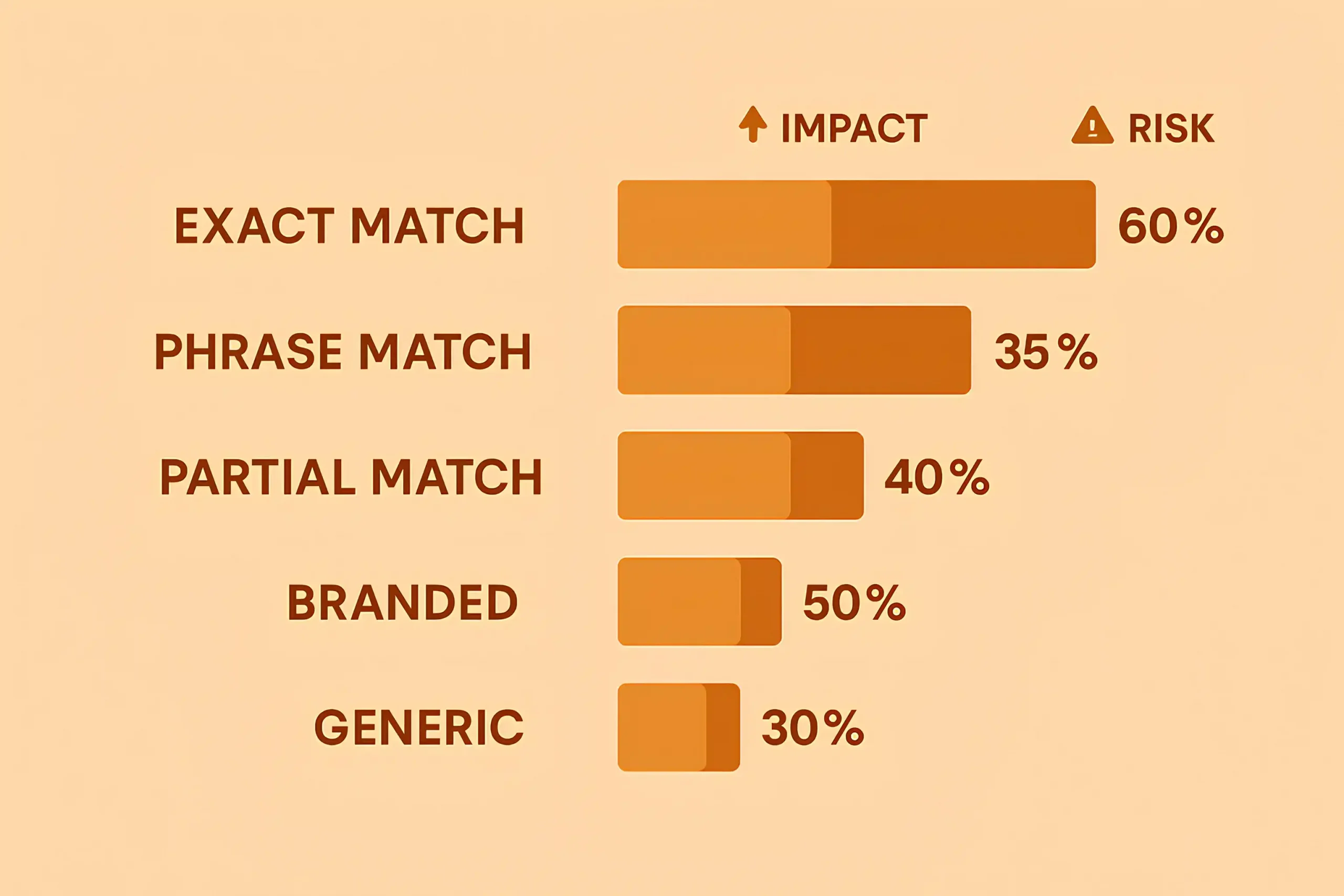
44% of links have branded anchor text, indicating a shift to more natural linking practices.
27% of penalty notices from Google mention “excessive exact-match anchors” as a major factor.
59% of eCommerce sites see better product page ranking with descriptive anchor text referencing the model or SKU.
38% of successful link pitches highlight how the requested anchor fits with the referring page’s topic.
72% of link builders intentionally vary anchor texts to maintain a balanced, natural-looking link profile.
16% of websites include anchor text disclaimers (e.g., “affiliate link”) to maintain transparency.
43% of Google’s natural language processing updates center around context and anchor text usage.
68% of top-ranking pages in highly competitive niches maintain an anchor text density below 5% for any single keyword.
87% of link-building campaigns revolve around brand or URL anchors to avoid over-optimization.
52% of SEOs believe that a steady stream of 5-10 new backlinks per month is safer than aggressive link-building for maintaining ranking stability.
35% of brand-new sites that experience sudden link explosions risk triggering spam filters or manual reviews.
68% of link builders seek a progressive monthly increase in domain authority, typically around 1-2 points.
12% of websites see negative ranking impacts when link growth dips consistently for three months in a row.
79% of large enterprises intentionally spread out their link-building pushes to appear more natural in search engine eyes.
58% of domain migrations suffer a “link decay” period where older pages lose links if not properly redirected.
24% of SEO auditors consider inconsistent link velocity as a top reason for stagnant or declining keyword positions.
67% of digital agencies use specialized tools to measure monthly link acquisition rates for competitive benchmarking.
91% of SEOs emphasize the importance of building a predictable link cadence to avoid suspicion and ensure stable growth.
73% of link-building agencies prioritize Domain Rating (DR) over organic traffic when selecting backlink opportunities.
Over 60% of SEOs say a backlink from a DR 60+ domain carries more weight than 10 lower-DR links combined.
52% of agencies reject outreach opportunities if the referring domain has less than 1000 monthly organic visitors.
Only 18% of link builders consider Moz’s Domain Authority (DA) as their primary quality metric.
More than 75% of link-building reports still include DR/DA scores despite industry shifts toward traffic-based vetting.
40% of specialists say they now filter prospects using a combination of DR, organic traffic, and spam score together.
68% of agencies won’t pitch to sites with an Ahrefs Traffic score below 500, even if DR is above 50.
Backlinks from pages with 0 organic traffic are 47% less likely to drive referral traffic or rankings.
One in three agencies say they now avoid websites with over 30 outgoing links per page, regardless of DR.
Over 55% of link-building teams track anchor text diversity as a monthly KPI.
41% of campaigns are paused or revised when referring domains exceed a 10% overlap with competitors.
76% of white-label link providers prioritize link placement within the first 400 words of a page.
On average, link builders take 4.6 days to vet a new domain manually before outreach begins.
Only 23% of agencies believe DR alone is a reliable predictor of SEO impact from a backlink.
SEO professionals say that over 65% of high-DR links from link farms are easy to identify with proper backlink profiling.
28% of SEO professionals have managed at least one manual penalty due to unnatural backlink profiles.
64% of those penalized find that it takes at least 4-6 weeks to recover after cleaning up spam links.
29% of link builders rely on Google’s Disavow Tool quarterly to maintain a pristine link profile.
17% of websites that ignore spammy blog comments and forum signatures eventually receive a ranking drop.
52% of small business owners are unaware of negative SEO or toxic link attacks that can harm their domain.
23% of spam link notifications come from automatically generated websites with domain authority under 10.
44% of link audit specialists charge an average of $1,000 to identify and remove toxic links for a midsized site.
19% of disavow requests are submitted without verifying whether the domains truly harm SEO.
62% of agencies conduct a link cleanup every time there’s a major Google algorithm update.
39% of SEOs consider the “ratio of toxic to healthy links” as one of the top three indicators of domain health.
88% of marketers say they measure link-building success based on improvements in organic traffic and leads generated.
67% of businesses see at least a 2:1 return on investment from well-executed link-building campaigns within a year.
31% of eCommerce sites track the direct revenue attributed to referral traffic from acquired backlinks.
59% of B2B companies notice a faster sales cycle when prospects discover them through authoritative inbound links.
74% of marketing teams tie link-building budget to overall content performance, adjusting spending as ROI increases.
28% of link-building ROI is driven by secondary factors such as brand mentions, PR coverage, and influencer goodwill.
15% of enterprises factor in link-building metrics when calculating annual marketing bonuses.
63% of small businesses rank link-building as their second-highest ROI marketing channel, just behind paid search.
36% of agencies have a dedicated “ROI or Nothing” policy, if a link-building tactic doesn’t show measurable returns, they abandon it.
3,000+ word articles attract 3.5x more backlinks than short posts.
Infographics earn 2x more links on average compared to plain-text content.
Case studies are the most underused but highly linkable assets in 2025.
Listicles and “best tools” content are among the top 5 backlink-earning formats.
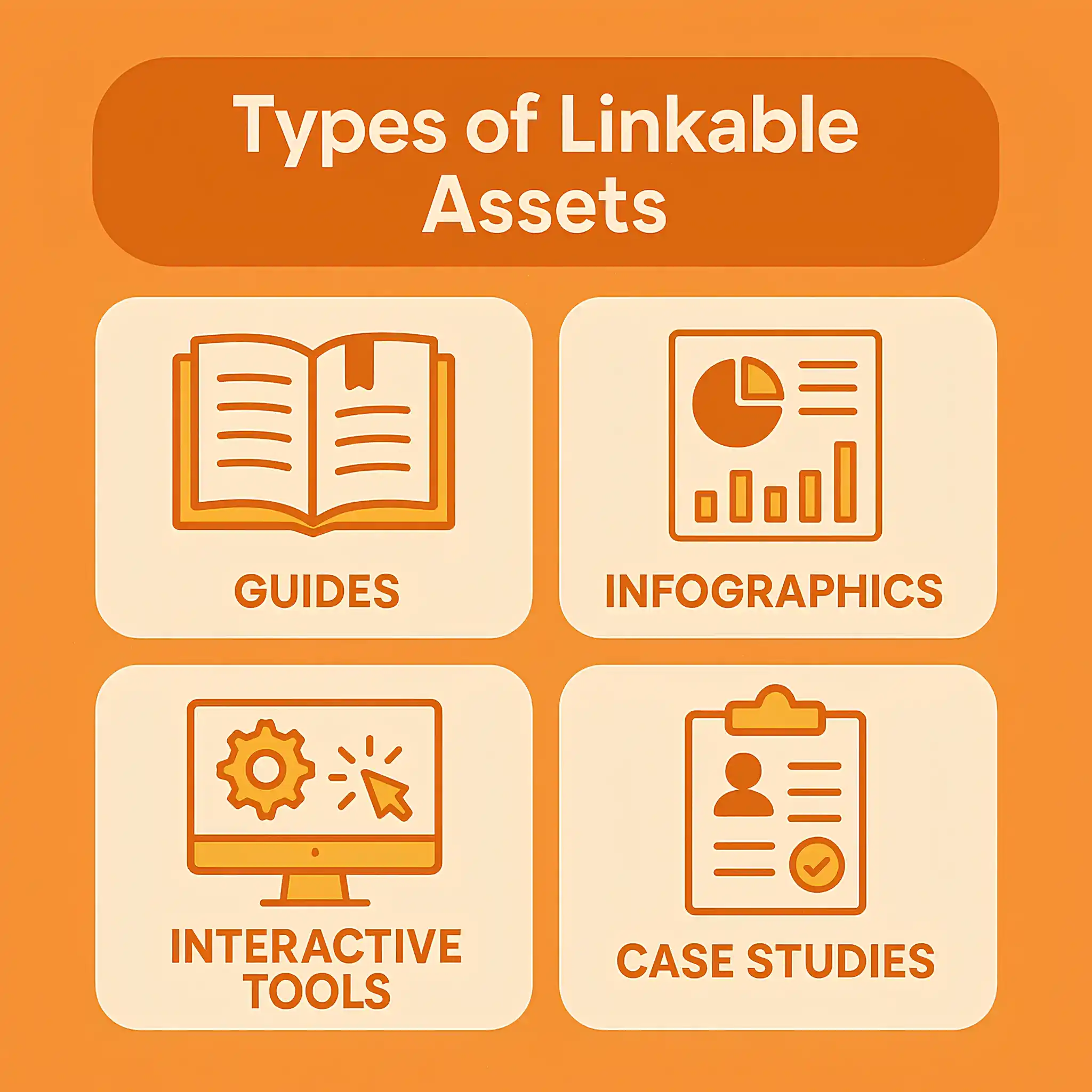
Content with original research receives 4x more high-authority links.
Videos embedded in blog posts increase linking chances by 35%.
Statistics-based posts are shared and linked 2.3x more often than opinion content.
Linkable assets with interactive elements generate 45% higher engagement.
Whitepapers and eBooks often earn 20–40 backlinks within the first 3 months.
Free tools or calculators can become evergreen link magnets.
“Ultimate guides” are still among the highest-performing evergreen assets.
Templates and swipe files generate 2x more links than standard blog posts.
Visual explainers receive more editorial links than generic how-tos.
Guest-posted assets earn fewer links unless repurposed into multiple formats.
Assets promoted with email outreach have a 3x higher chance of earning backlinks.
Manual link-building delivers higher quality but requires 4–5x more effort.
Automated link-building can generate links faster but often lacks contextual relevance.
Manual outreach emails have a 40% higher response rate than automated sequences.
Editorial links are 3x more common in manual campaigns.
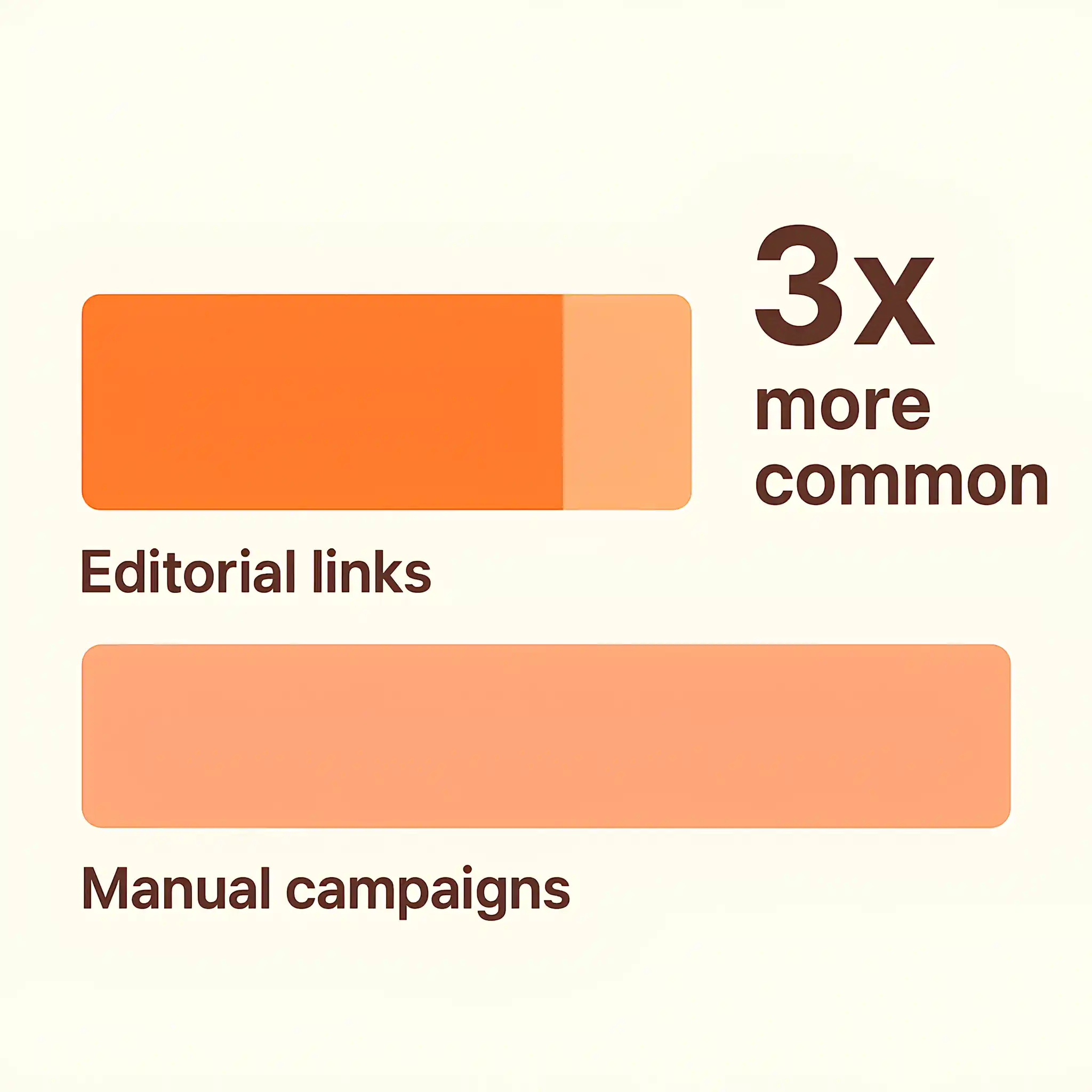
Automated tactics often trigger spam filters in mass email tools.
Manual link-building allows for niche-relevant, personalized link placements.
Tools can automate prospecting, but outreach and negotiation still perform better manually.
Manual link-building provides better ROI in long-term campaigns.
Overuse of automation increases the risk of nofollow or low-trust links.
Many premium blogs reject obviously automated outreach pitches.
Hybrid approaches: automated prospecting + manual outreach, yield the best results.
Automation helps scale volume, but manual review ensures quality.
Most high-authority websites prefer human-to-human interaction.
Manual link-building adapts better to brand tone and guidelines.
Agencies offering manual strategies charge more but produce stronger link profiles.
SaaS companies are among the most active link-building clients due to high competition in SERPs.
Over 75% of successful SaaS SEO campaigns include link-building as a primary growth lever.
SaaS brands with 100+ referring domains tend to outperform others by 2–3x in organic traffic.
Early-stage SaaS startups using SaaS link-building see 40–60% faster keyword movement.
Editorial backlinks remain the top-performing link type for SaaS brands.
SaaS companies prioritize link-building over social media in long-term growth strategies.
Long-form SaaS blog content with strong backlinks gets indexed faster and ranks more reliably.
Over 60% of SaaS businesses outsource their link-building to agencies or freelancers.
SaaS companies with active backlink campaigns have 3x better domain visibility.
Product comparison pages on SaaS sites earn 4x more backlinks than homepage links.
Top-performing SaaS blogs generate 65% of their links through organic asset sharing.
Internal linking and external link-building combined improve SaaS rankings by 45%.
Founders involved in thought leadership link campaigns see better trust and link quality.
Most funded SaaS companies spend 15–30% of their SEO budget on link-building.